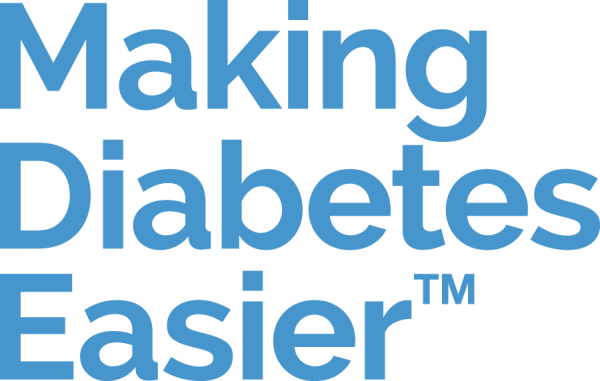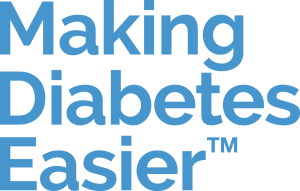The difference between type 1 diabetes and type 2 diabetes

The difference between type 1 diabetes and type 2 diabetes
Type 1 and type 2 diabetes share the common symptom of chronic hyperglycaemia, meaning too much sugar in the blood, but they also have many differences [1,2]. Causes, symptoms, and treatment: read on to find out what makes type 1 diabetes different from type 2 diabetes.
Two very different causes
Insulin is a hormone produced in the pancreas. Its role is to regulate blood glucose levels (glycaemia) [3,4].
Type 2 diabetes occurs when the body stops using insulin correctly and the pancreas cannot produce enough insulin to compensate for the shortfall [1,2,4,5].
Unlike type 2 diabetes, type 1 diabetes is an autoimmune condition in which the body no longer makes insulin at all, because antibodies destroy the pancreatic cells that are responsible for its production [1,2].
Genetic predisposition favours the development of type 2 diabetes and, to a lesser degree, type 1 diabetes [1,5]. Indeed, the risk of type 2 diabetes is estimated at about 40% when one of the parents has type 2 diabetes, compared to only 5% for type 1 diabetes when at least one of the parents has it [5].
However, heredity is not the only trigger for type 2 diabetes, as it is also largely dependent on lifestyle: a mainly sedentary lifestyle with a high-calorie diet and lack of sleep, often leading to being overweight [4,5,6].
International researchers and experts speculate that various environmental factors may also be involved in the development of type 1 diabetes, but have not yet been able to clearly identify them [1,5].
Similar symptoms
Symptoms of hyperglycaemia are found in both types of diabetes: profuse urination (polyuria), constant thirst (polydipsia) and, sometimes, excessive hunger (polyphagia), and blurred vision [1].
Type 2 diabetes is unique in that it can develop over several years without any visible symptoms or with only mild signs [1,4,6]. Many people discover that they have type 2 diabetes by accident when they have blood tests for other reasons [6].
Diagnosis is based on the same criteria for both types of diabetes: measurement of blood glucose (either fasting, at any time of the day, or after taking 75 g of glucose) and glycated haemoglobin (HbA1c) via a blood test [1,2].
Different treatments
People living with type 1 diabetes will systematically require insulin therapy administered by insulin pen, syringe or insulin pump [2,5].
Initial treatment of type 2 diabetes involves transitioning to a healthy lifestyle, with a balanced diet, regular physical activity, and weight loss [2,4,5]. If this fails to stabilise blood glucose levels, then prescription of anti-diabetic drugs or insulin therapy may be proposed [2,4,5].
Distribution of the two diabetes types throughout the population
Type 1 diabetes, representing 5-10% of all diabetes cases, occurs mostly in childhood and adolescence, but can also appear in adulthood [1,2].
Type 2 diabetes represents 90-95% of all people with diabetes, mostly adults [1,2].
Another notable difference between the two types of diabetes is that while a significant proportion of people with type 2 diabetes are overweight, obese, or normal weight with excess abdominal fat, people with type 1 diabetes are generally within the normal weight range [1,2].
Sources:
- American Diabetes Association. Diagnosis and classification of diabetes mellitus. Diabetes Care 2013 Jan; Vol.36 Supplement 1:S67-74. ; doi: 10.2337/dc13-S067.
- A. Petersmann et al. Definition, Classification and Diagnosis of Diabetes Mellitus. Exp Clin Endocrinol Diabetes 2019; 127 (Suppl 1): S1–S7 ; doi : 10.1055/a-1018-9078.
- A H Khan, J E Pessin. Insulin regulation of glucose uptake: a complex interplay of intracellular signalling pathways. Diabetologia. 2002 Nov;45(11):1475-83. doi: 10.1007/s00125-002-0974-7. Epub 2002 Oct 18.
- Andreas F H Pfeiffer, Harald H Klein. The treatment of type 2 diabetes. Dtsch Arztebl Int. 2014 Jan 31;111(5):69-81; quiz 82. doi: 10.3238/arztebl.2014.0069.
- JS Skyler et al. Differentiation of Diabetes by Pathophysiology, Natural History,and Prognosis. Diabetes 2017;66:241–255 | DOI: 10.2337/db16-0806.
- Samantha Roberts, Eleanor Barry, Dawn Craig , Mara Airoldi, Gwyn Bevan, Trisha Greenhalgh. Preventing type 2 diabetes: systematic review of studies of cost-effectiveness of lifestyle programmes and metformin, with and without screening, for pre-diabetes. BMJ Open. 2017 Nov 15;7(11):e017184. doi: 10.1136/bmjopen-2017-017184.

